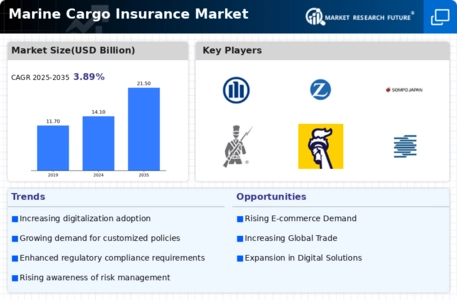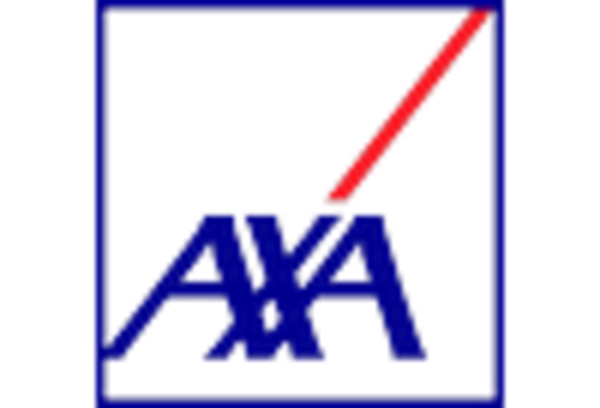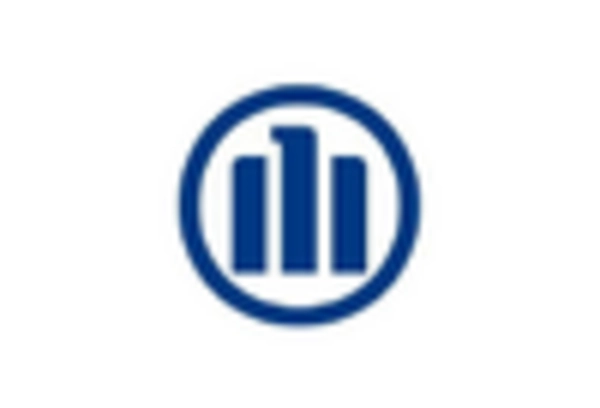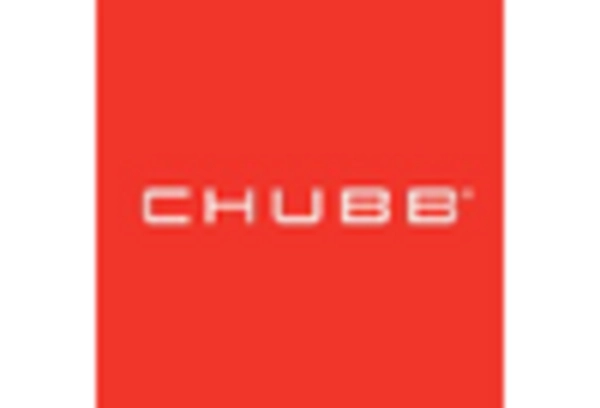The Marine Cargo Insurance Market is currently characterized by a dynamic competitive landscape, driven by increasing global trade and the need for risk management solutions. Key players such as AIG (US), Allianz (DE), and Chubb (US) are actively shaping the market through strategic initiatives aimed at enhancing their service offerings and operational efficiencies. AIG (US) has focused on digital transformation, leveraging technology to streamline claims processing and improve customer engagement. Meanwhile, Allianz (DE) emphasizes sustainability in its operations, aligning its insurance products with environmental considerations, which appears to resonate well with clients increasingly concerned about climate risks. Chubb (US) has adopted a strategy of regional expansion, particularly in emerging markets, to capture new business opportunities and diversify its portfolio.
The business tactics employed by these companies reflect a moderately fragmented market structure, where competition is intense yet offers opportunities for differentiation. Localizing services and optimizing supply chains are common strategies that enhance responsiveness to client needs. The collective influence of these key players fosters a competitive environment that encourages innovation and adaptability, as companies strive to meet the evolving demands of their clientele.
In August 2025, Allianz (DE) announced a partnership with a leading technology firm to develop an AI-driven risk assessment tool specifically for marine cargo insurance. This strategic move is likely to enhance Allianz's underwriting capabilities, allowing for more accurate pricing and improved risk management. The integration of AI into their operations could potentially set a new standard in the industry, positioning Allianz as a leader in technological innovation within marine insurance.
In September 2025, Chubb (US) launched a new suite of marine cargo insurance products tailored for the renewable energy sector. This initiative reflects Chubb's commitment to supporting sustainable industries and indicates a strategic pivot towards sectors that are expected to grow significantly in the coming years. By aligning its offerings with the renewable energy market, Chubb not only diversifies its portfolio but also enhances its brand reputation as a forward-thinking insurer.
In October 2025, AIG (US) unveiled a comprehensive digital platform designed to facilitate real-time tracking of shipments and claims. This platform aims to improve transparency and efficiency in the claims process, which is increasingly critical in a market where clients demand quick resolutions. AIG's investment in digital solutions suggests a recognition of the importance of technology in enhancing customer satisfaction and operational effectiveness.
As of October 2025, the Marine Cargo Insurance Market is witnessing trends that emphasize digitalization, sustainability, and the integration of advanced technologies such as AI. Strategic alliances are becoming increasingly prevalent, as companies seek to leverage complementary strengths to enhance their service offerings. The competitive landscape is likely to evolve, with a shift from traditional price-based competition towards a focus on innovation, technological advancements, and supply chain reliability. This transition may redefine how companies differentiate themselves in the market, ultimately leading to a more resilient and responsive marine cargo insurance sector.

















Leave a Comment